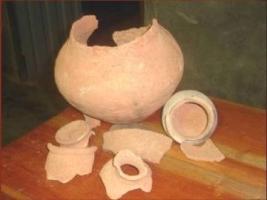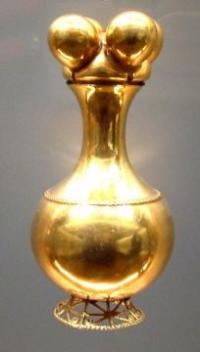Copy Link
Add to Bookmark
Report
Lambic Digest #0820

Return-Path: postmaster at lance.colostate.edu
Received: from srvr8.engin.umich.edu (root at srvr8.engin.umich.edu [141.212.2.81]) by srvr5.engin.umich.edu (8.7.4/8.7.3) with ESMTP id EAA02236 for <spencer at srvr5.engin.umich.edu>; Thu, 21 Mar 1996 04:14:34 -0500 (EST)
Received: from redheat.rs.itd.umich.edu (redheat.rs.itd.umich.edu [141.211.83.36]) by srvr8.engin.umich.edu (8.7.4/8.7.3) with ESMTP id EAA09148 for <spencer at engin.umich.edu>; Thu, 21 Mar 1996 04:14:23 -0500 (EST)
Received: by redheat.rs.itd.umich.edu (8.7.4/2.2)
with X.500 id EAA11152; Thu, 21 Mar 1996 04:14:22 -0500 (EST)
Received: from longs.lance.colostate.edu by redheat.rs.itd.umich.edu (8.7.4/2.2)
with SMTP id EAA11147; Thu, 21 Mar 1996 04:14:20 -0500 (EST)
Received: (daemon at localhost) by longs.lance.colostate.edu (8.6.12/8.6.5a (LANCE Revision: 1.3)) id AAA21351 for reallambic at longs.lance.colostate.edu; Thu, 21 Mar 1996 00:30:10 -0700
Date: Thu, 21 Mar 1996 00:30:10 -0700
Message-Id: <199603210730.AAA21351 at longs.lance.colostate.edu>
From: lambic-request at lance.colostate.edu (subscription requests only - do not post here)
To: lambic at lance.colostate.edu
Reply-to: lambic at lance.colostate.edu (postings only - do not send subscription requests here)
Errors-to: lambic-request at lance.colostate.edu
Subject: Lambic Digest #820 (March 21, 1996)
Lambic Digest #820 Thu 21 March 1996
Forum on Lambic Beers (and other Belgian beer styles)
Mike Sharp, Digest Coordinator
Contents:
Re: I'm Back in the E-Mail Loop -- and SUDS for Mac Redux! (Conn Copas)
Send article submissions only to: lambic at longs.lance.colostate.edu
Send all other administrative requests (subscribe/unsubscribe/change) to:
lambic-request at longs.lance.colostate.edu
Note that the request address is not an automated server. It forwards
to a real person who may not be able to process the request immediately.
Subscription changes often take 2-5 days, sometimes more.
Back issues are available by mail; send empty message with subject 'HELP' to:
netlib at longs.lance.colostate.edu
Phil Seitz' series on Brewing Belgian Beer is available; the index
from the archives lists individual topics and the complete set.
Start with the help message above then request the index.
A FAQ is also available by netlib; say 'send faq from lambic' as the
subject or body of your message (to netlib at longs.lance.colostate.edu).
----------------------------------------------------------------------
Date: Thu, 21 Mar 1996 16:00:37 +0930 (CST)
From: Conn Copas <cvc at itd.dsto.defence.gov.au>
Subject: Re: I'm Back in the E-Mail Loop -- and SUDS for Mac Redux!
Tom Ayres posted a while back about the possibility of adding Pedio at
bottling time for extra character. I was interested in the mention that he
had employed a sour mash technique. Now I realise that sour mashing is not
generally favoured by the cognoscenti, for a number of reasons: (a) it's a
crap shoot as far as micro-organisms go, and can result in off flavours, and
(b) some of the lactic acid is probably boiled off. In its favour, it provides
a quick means of generating acidity, and comes accompanied with an automatic
pasteurisation step for those who are nervous that acidification might proceed
too far. More about that later.
I, like a couple of others, have been experimenting with a more controlled
form of sour mashing, using a thermos flask. The drill is boil up some
unhopped wort, cool it down to 50C, add raw malt, incubate anaerobically for
2 days, then add this culture to the main batch, either to the unhopped wort
prior to the boil, or to the hopped wort post the boil. Don't have full results
to report at the moment, however I can say that controlled conditions
certainly seem to remove most of the element of chance to which others have
objected. First, any malt I have tried to date seems to be a reliable source of
souring bugs, without failure. Second, I have encountered neither evolution of
gas, a scummy wort, nor off odours, suggesting that those *nt*r*c bugs do not
survive a prolonged period at 50C. This is in spite of including the occasional
mouse dropping for interest's sake! The main variation seems to be whether any
medicinal phenols are produced, suggesting that some yeasts could be surviving.
Third, I have difficulty envisioning runaway acidity some time down the track,
because the acidity of the culture seems to plateau at an acceptable level
quite early.
The main unknown at this point is how the culture affects the hopped wort.
There are really two options: (a) add it at 50C to a wort which is cooling
slowly, or (b) pitch it with the yeast. I recently tried the second option, and
could detect no acidity at the end of the primary. My expectations are that it
could take at least 3 months for things to become interesting, which raises
the question of what these bacteria, presumably L. delbruecki, actually feed
on, and what if anything are the limiting conditions? Warner's words on
Berliner Weisse are not particularly revealing. Anyone with experience to
share?
Conn V Copas cvc at itd.dsto.gov.au
------------------------------
End of Lambic Digest
************************
-------























